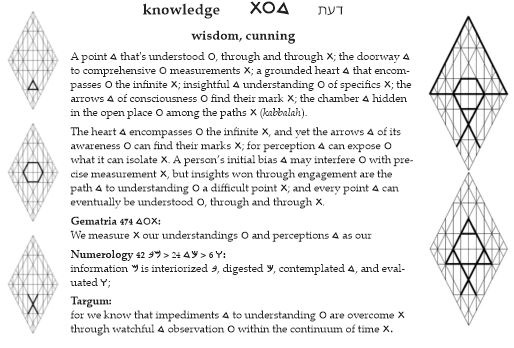 Introduction
Introduction
This presentation will be new to so many, as it was to me decades ago. Interpretation of the emblems is a difficult task if the rational mind is in charge of thought. The door does not open by force, as the sages of the East convey when they say that yoga does not come by force. It comes by acceptance.
Our faults and our ignorance are no surprise to spiritual masters, nor certainly to HaMashiyach Yahushua. Nevertheless, it is the pleasure of HaShem that we be admitted into the bridal chamber, so long as we are properly dressed, and the foundational garment is humility.
When I began this study, I knew nothing of Aramaic and had understood just a little of the script Moses and those with him used in compilation of Torah. It is called Sinaitic Hebrew; and, indeed, it is. It is also the language of the Phoenicians, the Porto-Canaanites, the ancient Greeks, the ancient Arabs, the Egyptian commoner: it was the common speech of the era, much as English is the common speech of the present,
The various people had their tongues for speaking with each other. Speech is an intimate phenomenon, and the name "tongues" is quite appropriate. Close groups had their dialects within affiliated groups, and sound is the simplest way to convey commands and subtleties. However, interaction across distances for people used to isolation made communication by sound, alone, very difficult. The peoples of ancient Egypt found a solution in the alefbet of Phoenicia.
Still in use today in isolated districts of Yemen on the Saudi peninsula, the Phoenician emblems were a means of focusing thought through symbols, which were aided by gestures and catch phrases for purposes of commerce. Without this means of communicating, Egypt would have been dysfunctional; for the hieroglyphs were property of the priests and the court of Pharaoh. The subtleties of the emblems made complex communication possible between adepts, but simple meanings served the grist of Egyptian commerce.
The word forms of what became Sinaitic Hebrew are alphanumeric, which means that they addressed mundane matters through the visual imagery, but that imagery also conveyed a numerical subtext; and the two together, could create fireworks. Before the presentation begins in earnest, I wanted to give two examples. The first ends this page. The second takes up a page all by itself: knowledge first, Abiasaph second:

You'll meet Abiasaph around the corner. If I remember right, I rather liked him. Regardless, he fills the page.
| Opening Menu | The Font | Abiasaph.One |
| Strong's Indexing | Hebrew Indexing | |
| site |
The Emblems |
book |